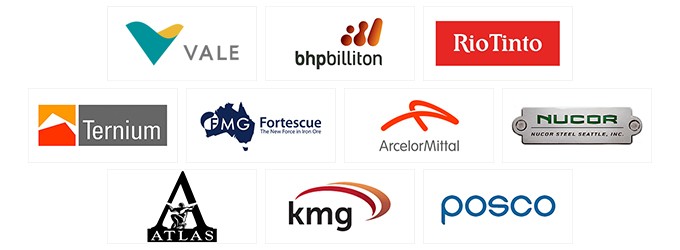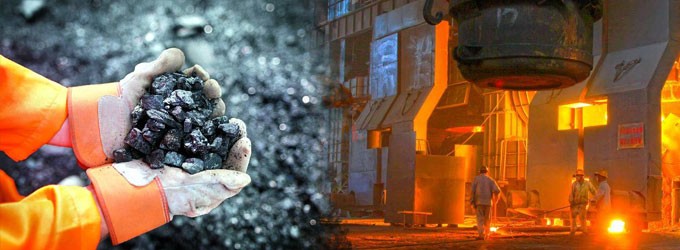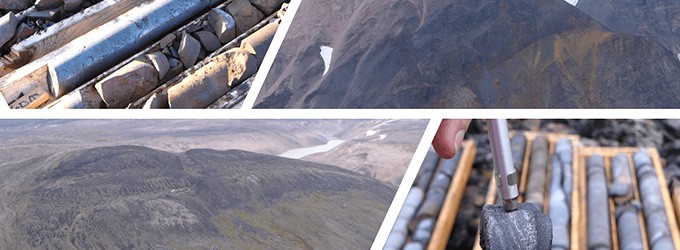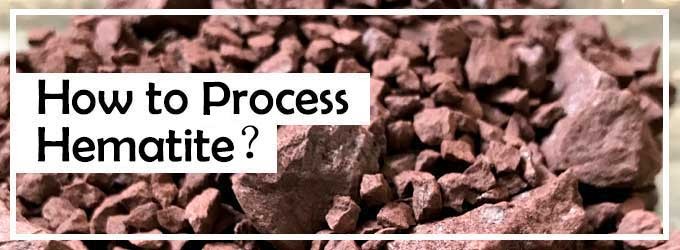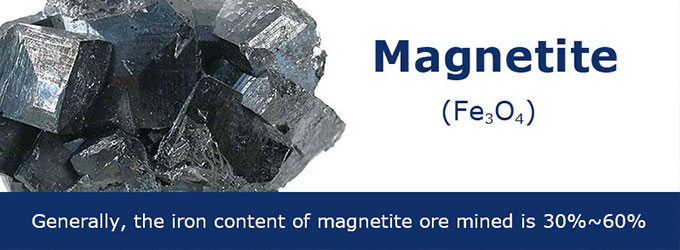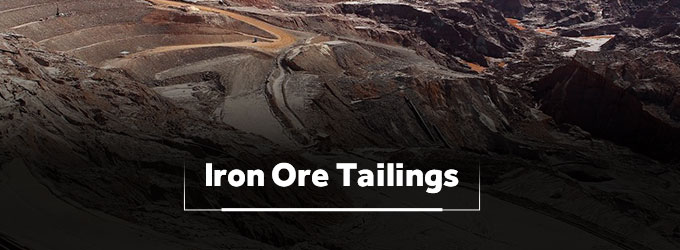Iron metal is the most commonly used metal in the world, accounting for 95% of all metals used each year. Iron ore is the rock and mineral, from which iron can be smelted economically.
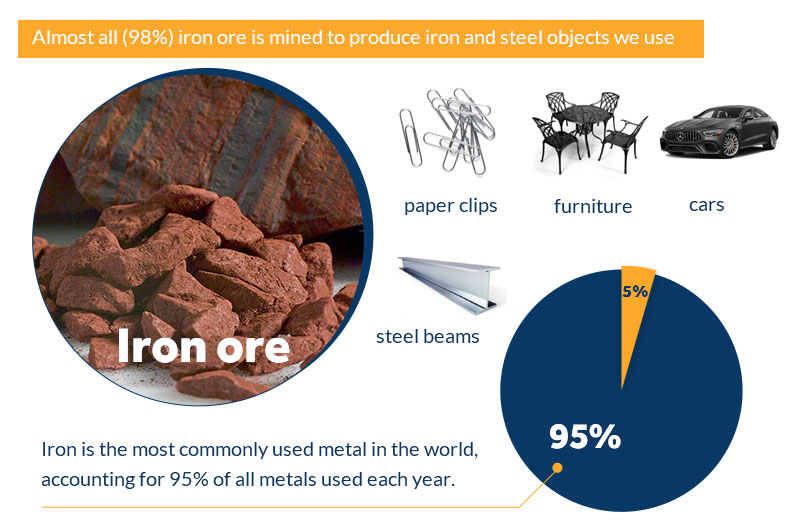
Iron ore is vital to the iron and steel industries. Almost all (98%) iron ore is mined to produce iron and steel objects we use - from paper clips, furniture, and cars, to steel beams in buildings.
What is iron ore?
Iron ore is a mineral that generates metallic iron (Fe) when heated with a reductant. The iron minerals’ colors vary and are caused by a high concentration of iron oxides.
The most important iron deposits are found in sedimentary rocks. There are more than 300 types of iron ore, but only 20 types are used, mainly in four types: magnetite (Fe3O4), hematite (Fe2O3), limonite (2Fe2O3·3H2O), and siderite (FeCO3).
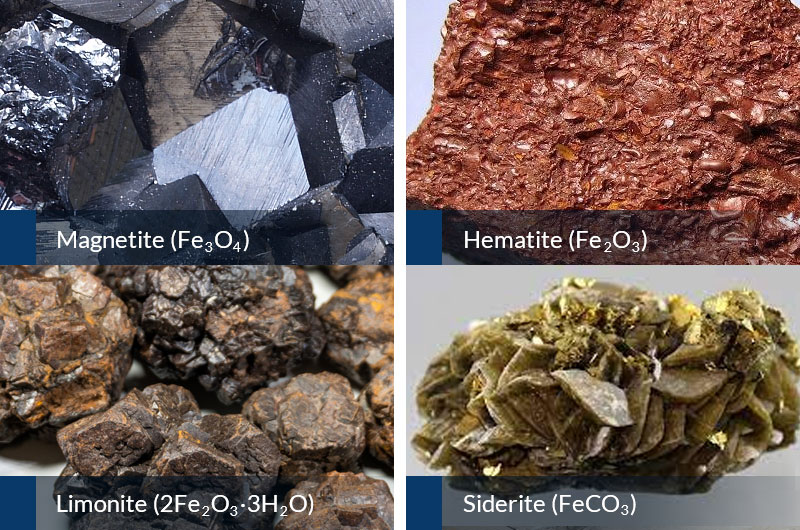
Hematite is considered the most important iron ore due to its high-grade iron concentrate and abundant resources.
Magnetite is considered the best iron ore due to its highest iron content.
Iron ore containing over 60% hematite or magnetite is regarded as high-quality iron ore, otherwise known as direct shipping ore (DSO). This means it can be fed directly into iron-making blast furnaces.
4 types of iron ore
1. Magnetite - best quality iron ore
Magnetite, also called lodestone. It is a natural magnet, hence the name, giving it a distinguishing characteristic.
Magnetite is the best iron ore. It has the highest iron content (up to 72.4%) and the strongest magnetic power. It can be separated from gangue, producing a high-grade concentrate (above 70%) with very few impurities.
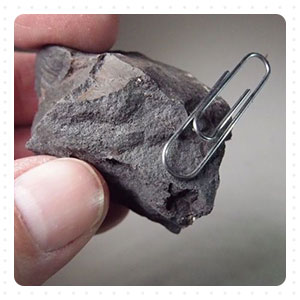
- Formula of magnetite: Fe3O4
- Magnetite iron content: Up to 72.4%
- Magnetite color: Black
- Magnetite hardness: 5.5-6.5
- Magnetite luster: Metallic
- Features: The best iron ore, strongest magnetic ore
Magnetite mineralare the most commonly mined magnetic ore of iron:
- Imaginary hematite and semi-artificial hematite: Magnetite oxidizes to hematite, but retains the crystalline form of magnetite.
- Titanium magnetite: Magnetite containing titanium (TiO2) oxide
- Vanadium magnetite: Magnetite containing vanadium (V2O5) oxides
- Vanadium-titanium magnetite: magnetite containing titanium and vanadium oxides
- Pyrrhotite: Symbiotic with pyrite (FeS). It is the second most common magnetic mineral.
Magnetite is rich in reserves. Australia, Brazil, America's Minnesota and Michigan, eastern Canada, and northern Sweden are the largest producers.
Magnetite's greatest use is as a high-quality iron ore for steel manufacture. It can also be applied in paints, ceramics, and magnetic micro- and nanoparticles for various technologies.
2. Hematite - the main ore of iron
Hematite, also spelled haematite, its name is derived from the Greek word for “blood,” in allusion to its red color.
Hematite is the main ore of iron (Fe) and the most important ore of iron in terms of the quantity used, but its iron content is slightly lower than that of magnetite.
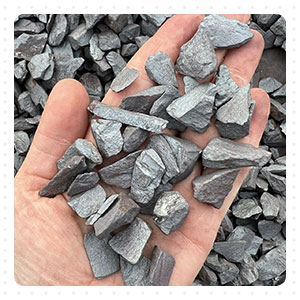
- Hematite formula: Fe2O3
- Iron content in hematite: Slightly lower than magnetite (up to 70%)
- Hematite color: Red, light gray, black
- Hematite crystal: Trigonal system
- Hematite hardness: 5.5-6.5
- Feature: The most important iron ore
Hematite is the main type of iron ore mined in Australia. Nearly all of Australia's iron ore exports are high-grade hematite (DSO), the bulk of which has been mined from deposits in the Hamersley province of Western Australia.
Brazil is another major source of hematite iron ore. Its Carajas mine, the largest iron mine in existence, is operated by Vale.
The main types of iron ore in India are hematite and magnetite. Hematite is mainly distributed in Bihar, Jharkhand, Odisha, Madhya Pradesh, etc.
Hematite has wide use, but its economic significance is very small compared to the importance of iron ore. It produces pigments, jewelry, healing stone, etc.
3. Limonite - inferior iron ore
Limonite is named from the Greek for meadow, from occurrences in bogs.
Limonite is not a true mineral but a mixture of hydrated iron oxide minerals mostly made up of goethite. It occurs as a secondary material, formed from the weathering of other iron ores or deposited as bog, lake, and shallow marine sediments.
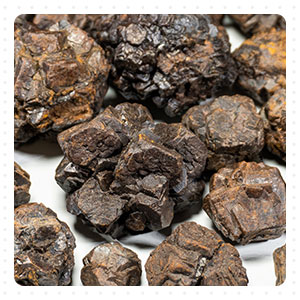
- Formula of limonite: FeO(OH)·n(H2O)
- Iron content: Up to 59.8%
- Color: Yellowish (tan, dark brown, black gray)
- Limonite luster: Earthy
- Limonite hardness: 4-5.5
- Features:Amorphous and variable iron oxide, large water content
Most limonite exists in the form of 2Fe2O3•3H2O. According to different crystal water content, limonite minerals can be divided into water hematite, needle hematite, limonite, and the like.
It has been used as low-quality iron ore for thousands of years due to its small deposit and large water content. Therefore, limonite needs to be briquetted before smelting. It is also the most important ocher and umber pigment.
4. Siderite - carbonate of iron with no magneticity
Siderite is also the name of a type of iron meteorite. It takes its name from the Greek word sideros, meaning "iron".
Siderite iron ore is a hard and dense carbonate of iron, containing no sulfur or phosphorus and is mixed with carbonates such as magnesium, manganese, and calcium. Siderite is roughly the equivalent of calcite but with iron replacing the calcium.
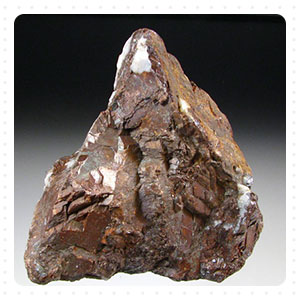
- Formula of siderite: FeCO3
- Iron content: Up to 48.2%
- Siderite color: Gray, Yellow-brown
- Siderite hardness: 3.75-4.25
- Siderite luster: Vitreous, silky, pearly
- Features: Non-magnetic, easily weathered into limonite
The ore siderite occurs mostly in sedimentary and hydrothermal environments or in igneous pegmatites (a variety of granite occurring in veins). Other minerals associated with siderite include barite, fluorite, galena, quartz, dolomite, sphalerite, pyrite, etc.
Although siderite is not high in iron content, the iron content of the CO2, after calcination, increases significantly due to the liberation, and the ore becomes porous with good reduction. Except for producing steel, siderite is the most permanent earth pigment for artists.
World production and iron ore price
Every year, 2 billion tons of raw iron ores are produced to make steel for infrastructure and other construction projects.
Currently, 50 countries are mining iron ores. Australia, Brazil, and China dominate the iron ore exports (63% of the market). Other producers include India, Russia, Ukraine, and South Africa.
The world's largest producer of iron ore is Brazil's Vale, followed by Australia's Rio Tinto and BHP.
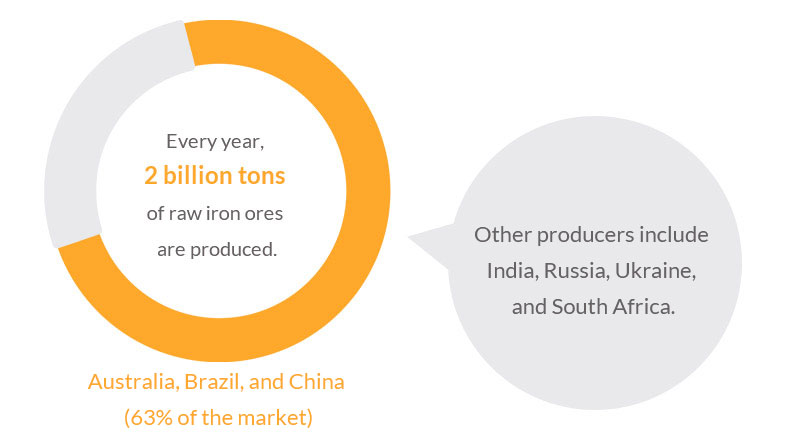
World consumption of iron ore grows 10% per annum on average. Among them, China is the largest consumer of iron ore, which translates to be the largest steel producer.
Currently, the iron ore price is 118 dollars. However, Australia’s OCE pointed out that the iron ore price will average around $100 a tonne in 2023 with risks to the downside.
It is expected that by 2028, the iron ore price will ease significantly to US$63 a tonne due to some structural changes in China.
How to get iron from iron ores?
Iron ore mining is mainly surface mining, and sometimes underground mining is also required.
The mined DSO only requires simple crushing and screening before being sent to steelmaking.
However, low-grade iron ore rock (mainly hematite and magnetite) requires grinding and beneficiation to obtain high-quality iron ore powder. Then, the iron powder is sent to make steel.
1. Crushing the raw iron ore
Raw iron ore enters a jaw crusher or mobile jaw crusher through a vibrating feeder for coarse crushing. Then it enters a cone crusher. The impact crusher and the roller crusher are also suitable for medium and fine crushing. The finely crushed iron ore is screened by a vibrating screen.
2. Grinding the iron ore particles
0-12 mm iron ore particles enter a ball mill for grinding and are classified by a spiral classifier. Qualified iron powder is sent to beneficiation operation, while the unqualified powder is return to the ball mill for regrinding.
3. Purification and impurity removal of iron ore powder
As iron powder contains not only the iron needed for production, but also contains other metal ores and gangues, it can be purified by analyzing the ore properties and using separation equipment.
Magnetite often uses a strong magnetic separator and flotation machine to obtain magnetite concentrate and remove quartz. Complex hematite uses the spiral chute, magnetic separator, and flotation machine.
The iron powder after beneficiation has met the commercial demand. At this time, dry it with a dryer to get the high-quality iron concentrate powder required for production.
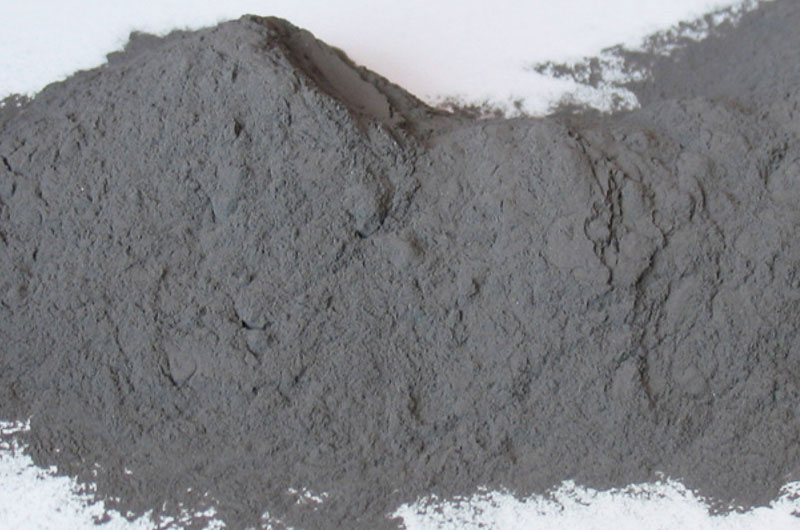
The remaining iron ore tailings can be recycled again and processed into high-quality concrete aggregates.
Conclusion
The iron and steel industry is the backbone of all industries. Hematite and magnetite are the best quality and most important iron ores for steelmaking. With over 40 years of experience in iron ore processing, Ftmmachinery can help you maximize iron extraction.


